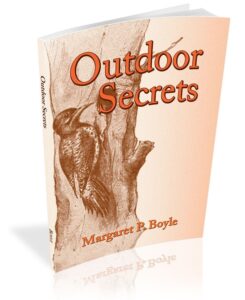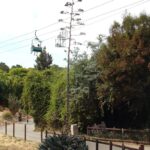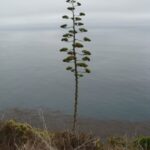60-day returns • free shipping on USA orders $129+
Outdoor Secrets Links and Tips


The Bonus Features below are related to our book Outdoor Secrets. Enjoy the book by itself or add The Outdoor Secrets Companion handbook for additional ideas, living books, nature study, and more. Be sure to check back here from time to time because we will be adding new and updated resources related to the book as we get them. If you have some resources that you’d like to recommend, let us know!
Suggested Schedule
Here’s a 36-week schedule for using Outdoor Secrets with the Outdoor Secrets Companion.
Century Plant
- Anna Lynn S. passed along this information: We are enjoying Outdoor Secrets and your Companion. Lo and Behold, we went to visit family in California and saw a beautiful Century Plant in bloom at the Oakland Zoo. I’ve never been so excited about seeing a plant! Also wanted to send you a link to a fabulous 4-5 minute video entitled “The Amazing Century Plant!” on you-tube done by a horticulturalist at a zoo in Texas.
She also gave us two photos of Century Plants: The first one is the best. It was the one we saw at the Oakland Zoo. You can see the whole stalk and the base. The second one we saw when we stopped for a scenic view on the Pacific Coast Highway. The blooms are greener, but you can’t see the leaves at the base because it was growing on the side of a cliff. Fun stuff!
Golden Rod
- Wikipedia article on goldenrod
- A descriptive article on goldenrod with a photo
- Goldenrod legends and lore
- Information on the Compass Goldenrod: The compass goldenrod (Solidago nemoralis) is one of the most brilliantly colored of the goldenrods, whose gracefully bent flowering heads point to the north. It is a late flowering species, with the flowers growing on the upper side of the bowed stem. The leaves are dull olive-green and covered with minute gray hairs. (Wildwood Wisdom, Ellsworth Jaeger, p. 396).
Horse Chestnut
- Wikipedia article on Horse Chestnut and a photo
Robins
- Information about the American Robin
- Information about the European Robin
- The All About Birds page on robins
Flickers
- Wikipedia article about the Northern Flicker
- All About Birds entry for the Northern Flicker
Dragonflies
- Wikipedia article on the dragonfly
- Q and A on a dragonfly Web site
- Scientific article and lots of up-close photographs of dragonflies and damselflies
Brave Plant
- Facts about the chamomile plant with a great photograph of one
Pussy Willows/Seed Dispersion
- Lots of great information and up-close pictures of seeds that are dispersed by the wind
- A wonderful 10-minute video, Seed Dispersal
- Lots of great photographs of various kinds of fruit and seed dispersal
- A simple article on seed dispersal
Wasps
- An article on the paper wasp
- Wikipedia article on the paper wasp
- Large, extreme close-up photos of the Great Golden Digger Wasp
Mistletoe
- Wikipedia article on Mistletoe. It even has a picture of Mistletoe on an apple tree.
- An article on the various kinds of Mistletoe
- Lots of photos of Mistletoe
Chipmunks
Angela B. found the poem used in Lesson 47 of The Outdoor Secrets Companion, “The Chipmunk’s Day” available for free in The Anthology of Children’s Literature, Fifth Edition (1969) on page 246.


